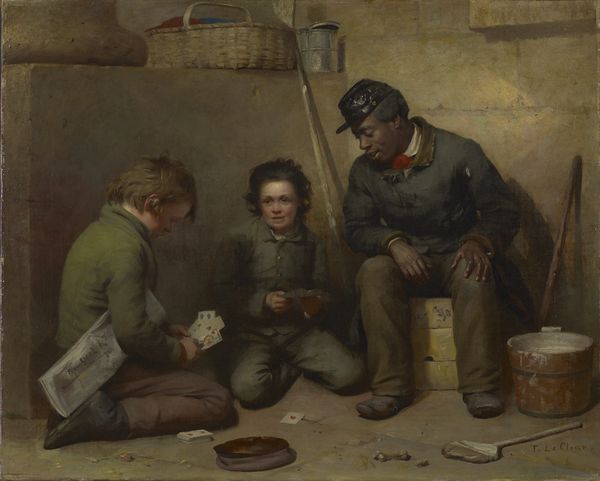Annotation:Seven Up: Difference between revisions
(Created page with "__NOABC__ <div class="noprint"> <p><font face="Century Gothic" size="4"> Back to [[{{BASEPAGENAME}}]] </font></p> </div> ---- {{#lst:{{PAGENAME}}|abc}} ---- <div style="page-b...") |
No edit summary |
||
| Line 10: | Line 10: | ||
<div style="text-align: justify; direction: ltr; margin-bottom: 90px; margin-left: 70px; margin-right: 120px;"> | <div style="text-align: justify; direction: ltr; margin-bottom: 90px; margin-left: 70px; margin-right: 120px;"> | ||
<br> | <br> | ||
'''SEVEN UP.''' See “[[Cale Smith's Pastime]],” “[[Fair and Forty]],” "[[Nigger and the White Man]].” American, Reel (2/4 time). G Major. Standard tuning (fiddle). AABB. 'Seven Up' was a card game in which a total of seven points was game. It is a variant of All-Fours or Old Sledge (the latter is also the name of a fiddle tune). | '''SEVEN UP.''' See “[[Cale Smith's Pastime]],” “[[Fair and Forty]],” "[[Nigger and the White Man]].” American, Reel (2/4 time). G Major. Standard tuning (fiddle). AABB. 'Seven Up' was a card game in which a total of seven points was game. It is a variant of All-Fours or Old Sledge (the latter is also the name of a fiddle tune).[[File:sevenup.jpg|600px|thumb|left|Thomas Le Clear, High, Jack, Game, c. 1865. Boys playing seven-up.]]<br> | ||
<br> | |||
</div> | </div> | ||
</font></p> | </font></p> | ||
| Line 28: | Line 27: | ||
<p><font face="Century Gothic" size="2"> | <p><font face="Century Gothic" size="2"> | ||
<font color=red>''Recorded sources'': </font> <font color=teal> - </font> | <font color=red>''Recorded sources'': </font> <font color=teal> - </font> | ||
See also listing at:<br> | |||
For a masterful investigation of the painting and aspects of race, see Tanya Sheehan's article "Playing the Race Card: Thomas Le Clear’s High, Jack, Game" [http://editions.lib.umn.edu/panorama/article/playing-the-race-card/]<br> | |||
</font></p> | </font></p> | ||
<br> | <br> | ||
Revision as of 03:26, 18 February 2019
X:1 T:Seven Up M:2/4 L:1/8 R:Reel B:Ryan’s Mammoth Collection (1883) Z:AK/Fiddler’s Companion K:G D|(3.G/.G/.G/ (B/G/) d(B/d/)|e/f/g/e/ e/d/B/d/|c/e/A/c/ B/d/G/B/|A/B/c/A/ G/F/E/D/| (3.G/.G/.G/ (B/G/) d(B/d/)|e/f/g/e/ e/d/B/d/|c/e/A/c/ B/d/G/B/|A/G/F/A/ G:| |:d|g/f/g/a/ b/g/d/g/|e/d/e/f/ g/d/B/d/|g/f/g/a/ b/g/d/g/|e/g/f/a/ gd| g/f/g/a/ b/g/e/g/|e/d/e/f/ g/d/B/G/|D/G/B/d/ g/d/B/d/|e/g/f/a/ g:||

